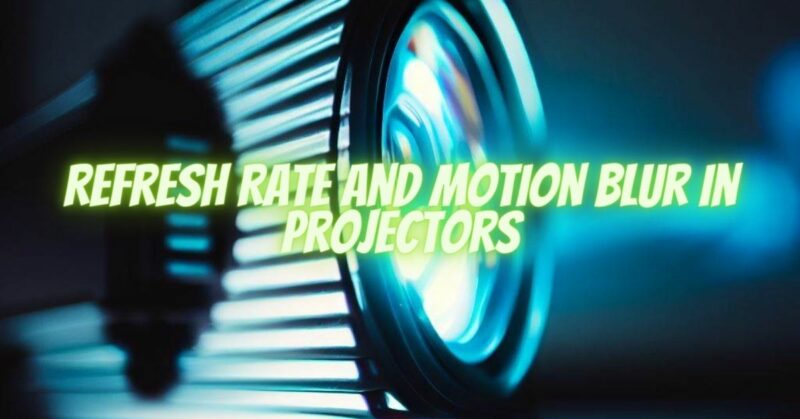In the realm of projector technology, the refresh rate plays a crucial role in minimizing motion blur and enhancing visual clarity during fast-paced scenes. Understanding the relationship between refresh rate and motion blur is essential for selecting projectors that deliver smooth and immersive viewing experiences. In this article, we explore how refresh rate impacts motion blur in projectors, the importance of a higher refresh rate for reducing blur, and the considerations for choosing the right projector for your needs.
- Defining Refresh Rate in Projectors: Refresh rate in projectors refers to the frequency at which the displayed image is refreshed. It is measured in Hertz (Hz) and represents the number of times per second the projector updates the image on the screen. A higher refresh rate leads to more frequent image updates and reduces the persistence of each frame.
- Understanding Motion Blur in Projectors: Motion blur occurs when the displayed image appears smeared or blurry during fast-moving scenes. It happens due to the persistence of each frame, where the image remains on the screen for a brief duration before transitioning to the next frame. The longer the persistence, the more noticeable the motion blur becomes.
- The Impact of Refresh Rate on Motion Blur: A higher refresh rate in projectors significantly reduces motion blur. With more frequent image updates, each frame remains on the screen for a shorter duration, minimizing the persistence and blur associated with fast-moving objects or camera panning. A higher refresh rate provides smoother motion reproduction and enhances visual clarity, especially in action-packed content.
- Considerations for Choosing a Projector with a Higher Refresh Rate: When selecting a projector, it is essential to consider the desired refresh rate and its impact on motion blur. Higher-end projectors often offer refresh rates of 120Hz or 240Hz, providing smoother and more fluid motion. However, it is crucial to note that the effectiveness of a higher refresh rate in reducing motion blur also depends on other factors such as response time, pixel transition speed, and image processing capabilities of the projector.
- Content and Viewing Environment Considerations: The significance of refresh rate and its impact on motion blur may vary depending on the type of content being viewed and the viewing environment. Fast-paced action movies, sports events, or video games with rapid movements can benefit greatly from a higher refresh rate to minimize motion blur. In contrast, slower-paced content or static images may not require an extremely high refresh rate to achieve satisfactory results.
- Balancing Refresh Rate with Other Factors: While a higher refresh rate is desirable for reducing motion blur, it is important to consider other factors as well, such as resolution, brightness, contrast ratio, and color accuracy, when choosing a projector. Finding a balance between refresh rate and overall image quality is crucial to ensure an immersive and visually pleasing viewing experience.
Conclusion:
The refresh rate plays a significant role in minimizing motion blur and enhancing visual clarity in projectors. A higher refresh rate leads to more frequent image updates, reducing the persistence of each frame and providing smoother motion reproduction. When selecting a projector, considering the desired refresh rate and its impact on motion blur, along with other factors, ensures an optimal viewing experience for fast-paced content. By understanding the relationship between refresh rate and motion blur, you can make informed decisions when choosing a projector that delivers captivating and blur-free visuals for an immersive cinematic or gaming experience.

